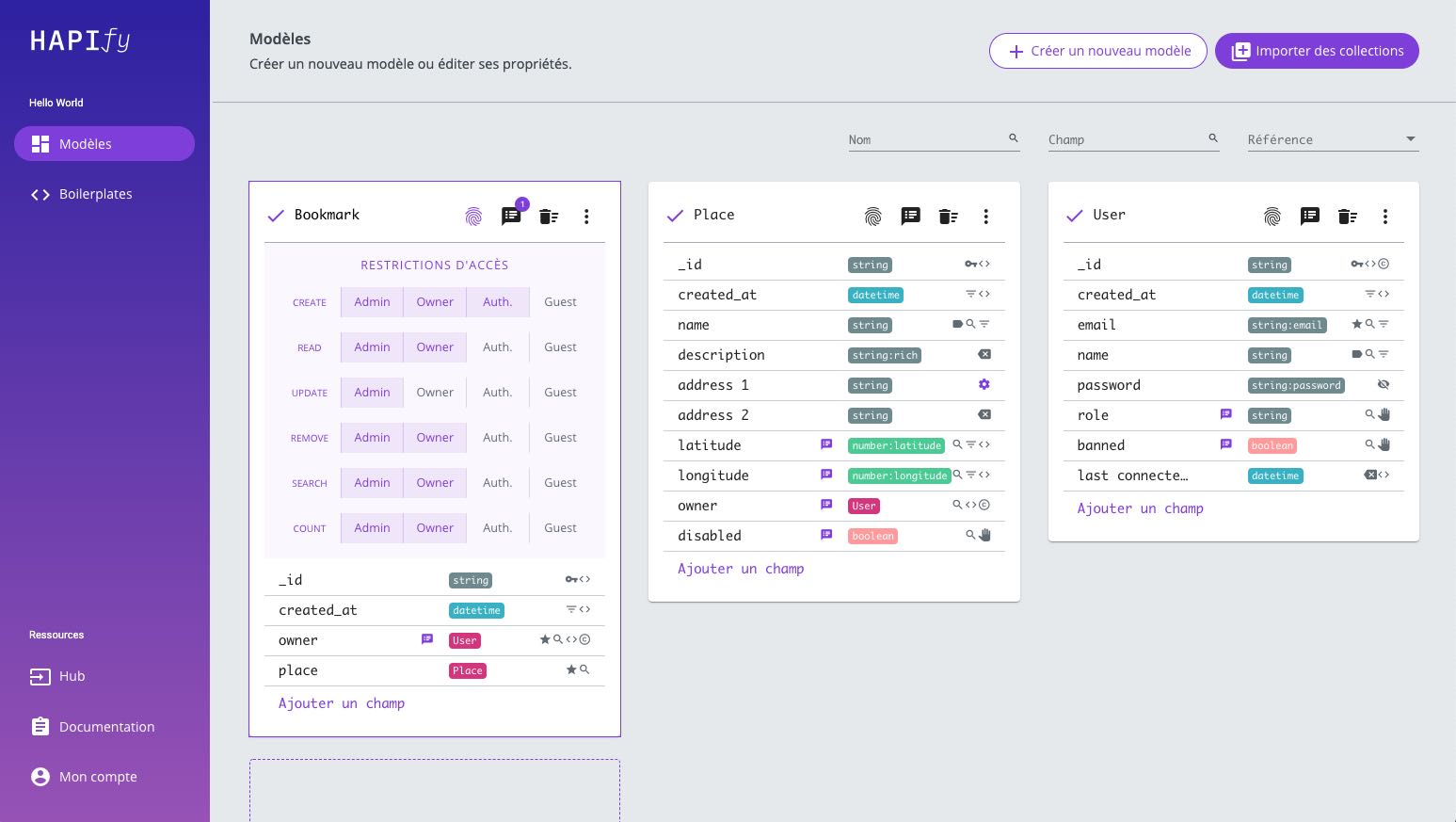Key concepts
Hapify automates the writing of CRUD operations for both back-end and front-end development. Focus only on business features instead of doing repetitive work!
- Hapify is an agnostic code generator for any type of application manipulating data models, in any language.
- Hapify works with any paradigm or code structure. You can write your own code templates or use those provided by the community.
- Hapify takes two inputs: data models and code templates.
Templating
Hapify provides a simple but powerful syntax to help you create dynamic boilerplates. Using Hapify you can either:
- Convert your own boilerplates into dynamic boilerplates.
- Use boilerplates provided by the community
See also
For more information about template engines, refer to the Hapify syntax documentation and the EJS and JavaScript templates documentation.
Data modeling
Hapify lets you define the data models that fit your project specifications. The model definition in Hapify is agnostic and featured-oriented (behavioral), which means Hapify defines what the model should do, not how it will do it.
The data models can be edited in a local web console.

Tip
You can import data models provided on the Hapify Hub.
See also
For more information on data models, you can refer to this.
Hapify Boilerplate
A typical Hapify boilerplate is divided into two parts:
- Dynamic files: Hapify template files, compatible with Hapify data models and the Hapify engine.
- Static files: All other files, which are not related to data models: Docker files, CSS files, libraries, plugins, etc.
Channel
A channel is a set of templates. Most boilerplates have only one channel. However, a full-stack boilerplate can contain two channels, one for front-end templates and one for back-end templates.